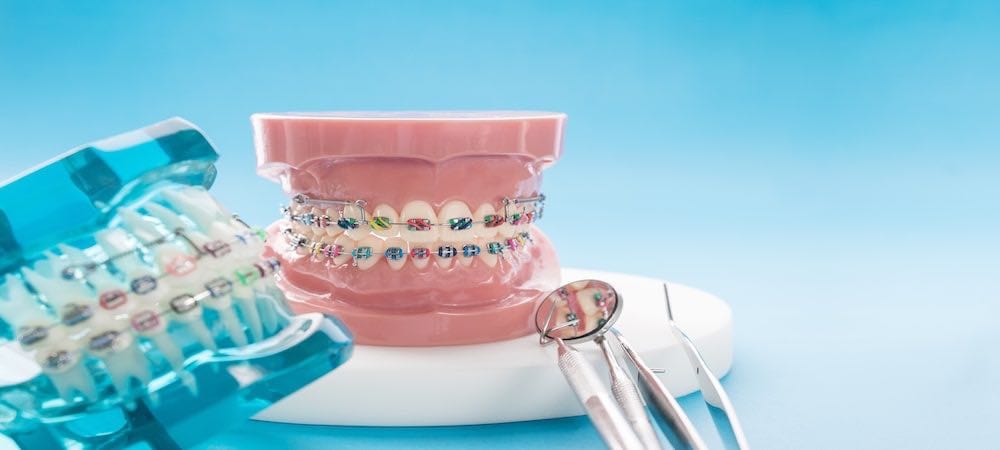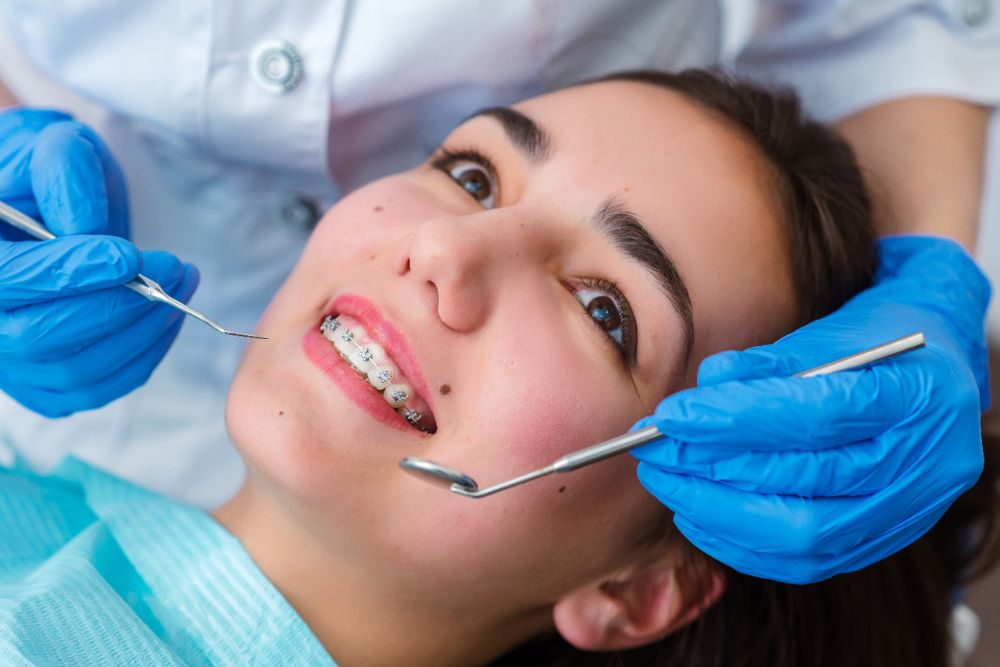Your Overview to Cumming Invisalign: Straightening Teeth with Style and Convenience
Your Overview to Cumming Invisalign: Straightening Teeth with Style and Convenience
Blog Article
Comprehensive Guide to Orthodontics Procedures for Remedying Oral Imbalances
In the realm of orthodontics, the journey to accomplishing a flawlessly aligned smile involves a myriad of procedures customized to deal with dental misalignments. From standard dental braces to invisible aligners and even medical alternatives, the field of orthodontics provides an array of solutions to deal with differing levels of oral irregularities. Comprehending the ins and outs of each treatment, including their mechanisms, benefits, and potential downsides, is crucial in making informed decisions about one's orthodontic treatment. As we navigate through the detailed overview to orthodontic treatments for remedying oral imbalances, the detailed information of each method will unravel, clarifying the path toward a functional and unified dental positioning.
Orthodontic Procedures Review

Along with clear aligners and typical braces, orthodontists may likewise advise other treatments like headgear, palatal expanders, or retainers to resolve particular placement issues (orthodontics). These treatments are customized to each individual's one-of-a-kind needs and may entail a combination of treatments to achieve the wanted results. Normal changes and monitoring are important components of orthodontic treatment to make certain development is on track and to make any required adjustments in the process. By undergoing orthodontic procedures, individuals can not just attain a straighter grin but also enhance their general dental wellness and feature.
Traditional Braces: How They Work
When thinking about orthodontic treatments for oral imbalances, conventional dental braces attract attention as a reliable technique for fixing teeth positioning. Traditional dental braces are composed of brackets, cords, and bands that collaborate to apply continual pressure on the teeth, gradually moving them right into the preferred placement. The brackets are connected to the teeth utilizing a special adhesive, and the cables are threaded with the braces. By adjusting the stress of the wires, orthodontists can regulate the direction and force related to each tooth, directing them right into appropriate placement in time.
One secret aspect of how traditional braces work is the procedure of bone makeover. As pressure is applied to the teeth with the dental braces, the bone bordering the teeth is improved to sustain the brand-new tooth positions. This renovation is crucial for the long-term stability of the fixed positioning. Individuals will certainly require normal changes at the orthodontist's workplace to ensure the dental braces proceed to use the proper stress for reliable teeth activity.
Invisible Aligners: Advantages And Disadvantages
Unnoticeable aligners use a hassle-free and very discreet option to typical dental braces for dealing with oral imbalances. These clear, personalized trays are virtually unnoticeable when used, making them an enticing alternative for individuals looking for an extra aesthetically pleasing orthodontic treatment. One of the primary advantages of undetectable aligners is their removability, enabling less complicated upkeep of dental hygiene compared to traditional braces. Patients can get rid of the a dentist near me aligners prior to eating or brushing their teeth, reducing the threat of food obtaining stuck in the device and streamlining the cleaning procedure.

Surgical Orthodontic Options
Surgical interventions in orthodontics present sensible alternatives for resolving intricate oral imbalances that might not be effectively dealt with through traditional orthodontic treatments. While standard dental braces and unseen aligners can fix lots of orthodontic concerns, particular situations call for medical intervention to attain optimum outcomes. Surgical orthodontic choices are normally suggested for serious malocclusions, considerable jaw inconsistencies, and cases where the underlying bone framework requires alteration to accomplish correct placement.
One common surgical orthodontic procedure is orthognathic surgical treatment, which entails rearranging the jaws to remedy useful concerns such as trouble speaking or eating. This surgery is commonly executed in cooperation with an orthodontist that helps straighten the teeth before and after the treatment. Surgical orthodontics may additionally involve treatments to expose influenced teeth, remove excess gum tissue, or improve the jawbone to create a much more unified facial account.
Before taking into consideration surgical orthodontic alternatives, clients go through a thorough assessment to establish the requirement and possible benefits of such treatments. cumming braces. While surgical treatment might seem daunting, it can dramatically improve both the function and aesthetics of the smile in situations my response where standard orthodontic treatments drop short
Retainers and Post-Treatment Treatment

Failing to abide with post-treatment treatment instructions can result in relapse, where the teeth slowly move back towards their initial positions. Consistent retainer wear, excellent dental hygiene, and regular oral exams are vital for maintaining the outcomes attained via orthodontic surgical treatment and making click for source sure the long-lasting stability of the corrected oral positioning.
Conclusion
In conclusion, orthodontic treatments use different options for dealing with oral misalignments. Traditional dental braces utilize metal braces and wires to change teeth right into proper placement. Undetectable aligners provide a more very discreet option but might not be appropriate for all instances. Surgical orthodontic choices are available for extra serious imbalances. Retainers are frequently used post-treatment to keep the new placement. Generally, orthodontic procedures can successfully improve oral health and visual appearance.
As we navigate with the thorough guide to orthodontic treatments for dealing with dental imbalances, the detailed details of each technique will certainly unfold, losing light on the course toward a unified and useful oral alignment. - cumming orthodontist
One of the most usual orthodontic treatments is the use of braces, which are composed of metal brackets and wires that apply mild stress to gradually move teeth right into the wanted placement.When considering orthodontic treatments for oral misalignments, conventional dental braces stand out as a reliable method for dealing with teeth positioning. Furthermore, invisible aligners may not be suitable for complicated orthodontic concerns that call for more considerable teeth activity, as they are typically suggested for moderate to modest instances. Retainers are personalized orthodontic devices developed to hold teeth in their corrected positions after the completion of orthodontic treatment.
Report this page